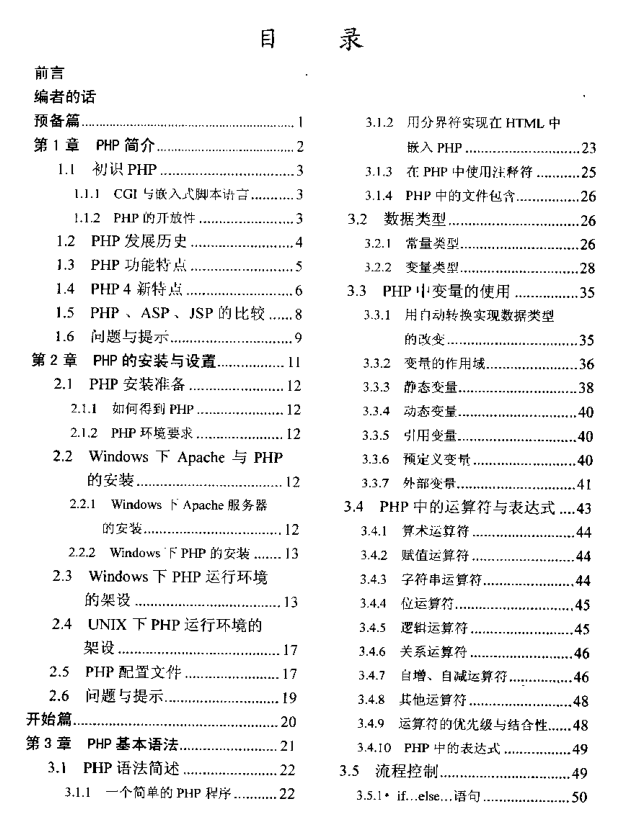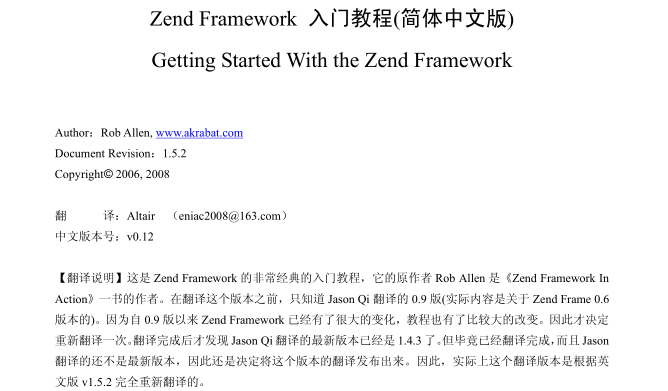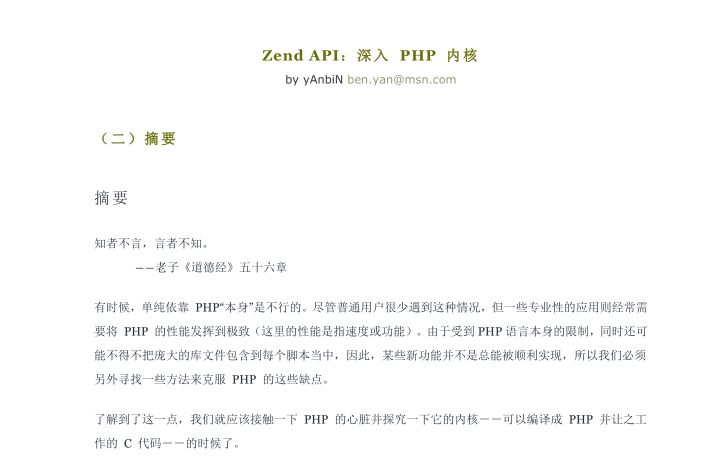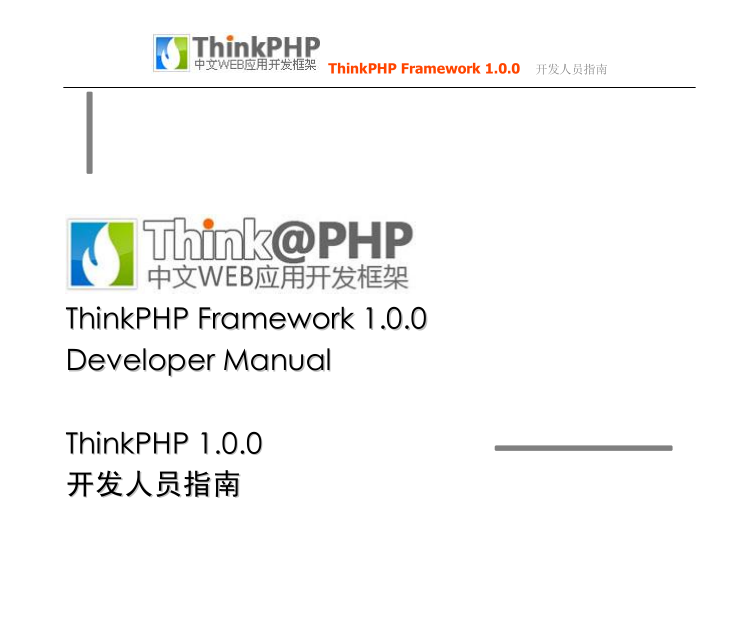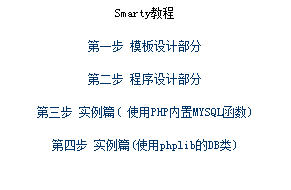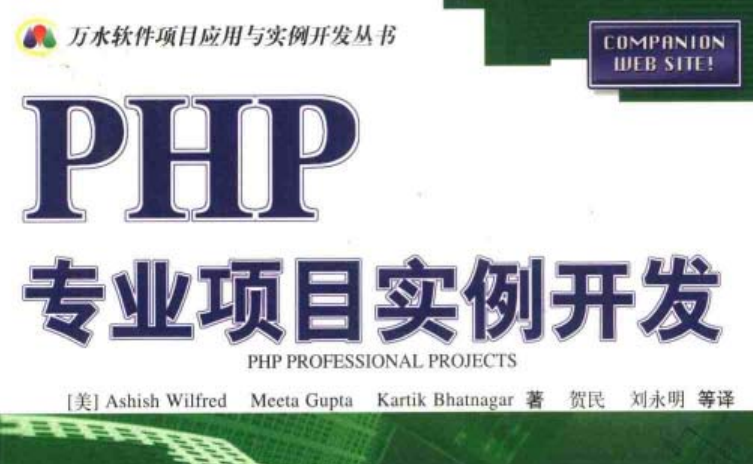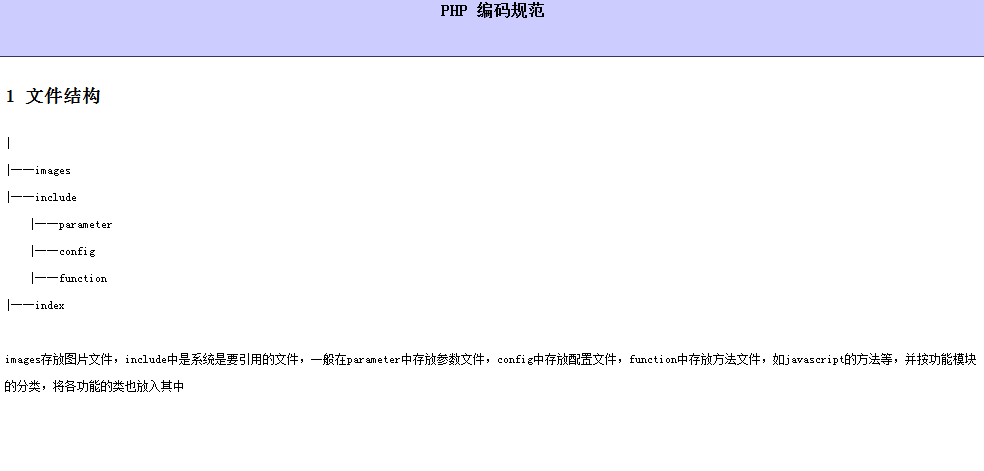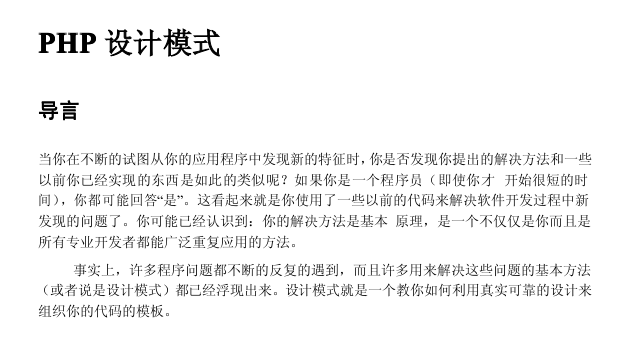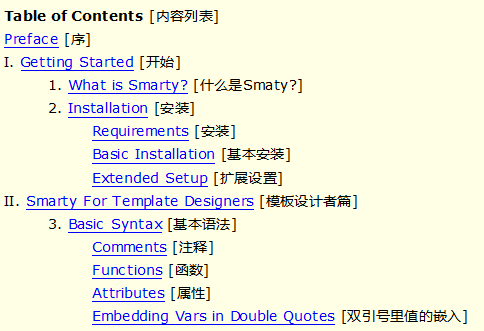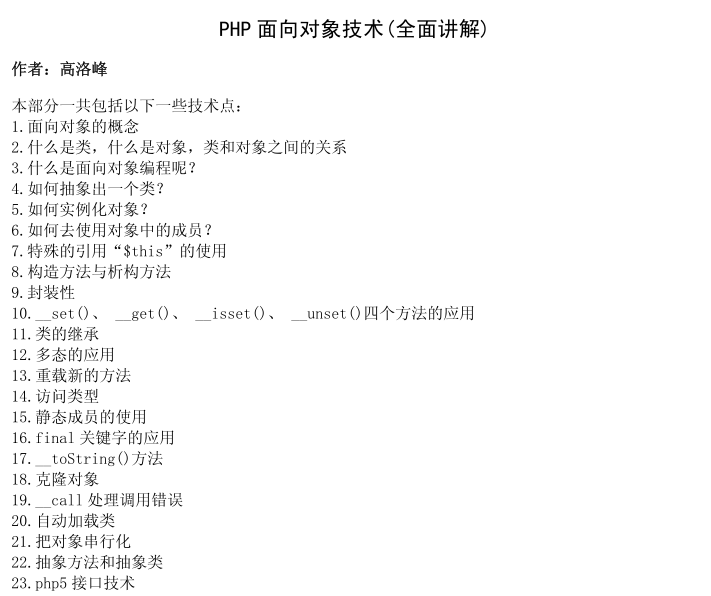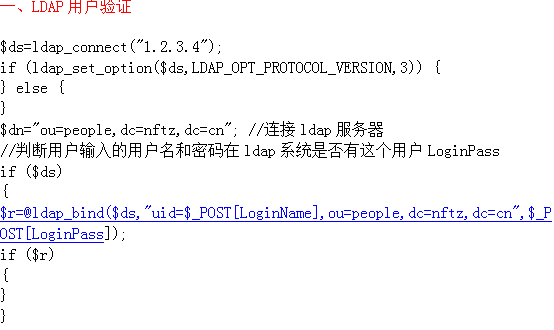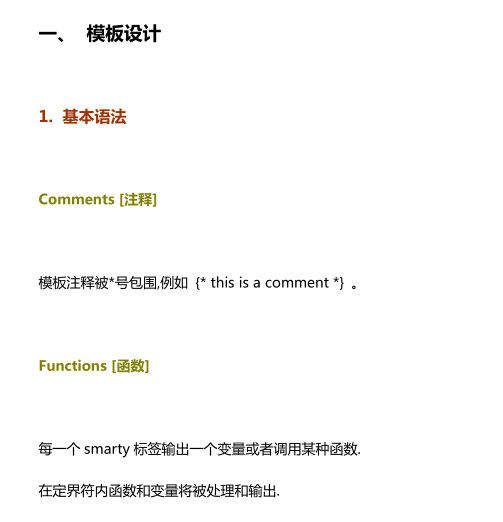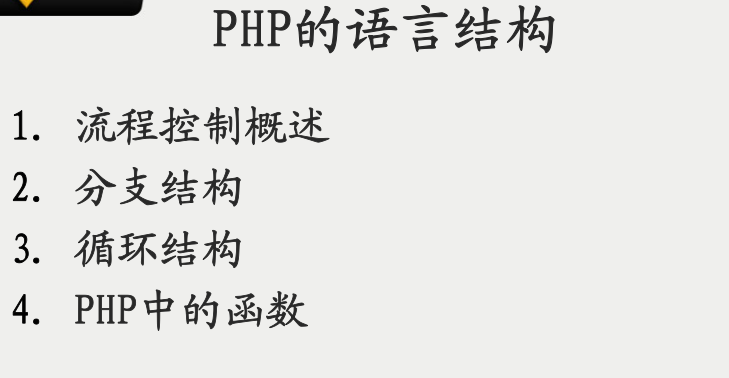
PHP is a powerful network programming language that is easy to learn and use, and has excellent portability and scalability. This book will introduce PHP programming to readers in detail. <br /> The whole book is divided into three parts: preparation, beginning and acceleration, with a total of 9 chapters. The preparatory chapter mainly introduces some preparatory knowledge for learning the PHP language and the establishment of the PHP operating platform; the beginning chapter introduces readers to the basic syntax and common functions of the PKP language in more detail, as well as how to use PHP to operate the MySQL database; the acceleration chapter introduces Typical examples are introduced to enable readers to fully grasp PHP. <br /> This book includes a large number of examples in the explanation of grammar to facilitate readers' learning. At the same time, it also includes some typical exercises in the form of "questions and tips" at the end of each of the first two chapters to consolidate what readers have learned. knowledge. <br /> <br />
php e-book28351292018-02-23
This is a very classic introductory tutorial for Zend Framework. Its original author, Rob Allen, is the author of the book "Zend Framework In Action". Before translating this version, I only knew version 0.9 translated by Jason Qi (the actual content is about Zend Frame version 0.6). Because Zend Framework has changed a lot since version 0.9, the tutorials have also changed significantly. That’s why I decided to translate it again. After the translation was completed, I discovered that the latest version translated by Jason Qi was already 1.4.3. But after all, the translation has been completed, and the version translated by Jason is not the latest version, so I decided to publish the translation of this version. Therefore, in fact this
php e-book28345562018-02-23
<p> 1. First use ext_skel to create a PHP extended module skeleton: </p> <p> What should be noted here is that the ext_skel tool is generally in the ext directory of the PHP source code package, but I prefer to put it out, that is, not to create a module in the ext directory of the PHP source code package. Suppose I now create a module in /home/php The module named php_hello </p> <p> #cd /home/php </p> <p> #/path/to/ext_skel --extname=php_hello </p> <p> #cd php_hello </p> <p> Modify the config.m4 file as follows: Simply remove some dnl comments: </p> <p> PHP_ARG_WITH(php_hello, for php_hello support,<br /> dnl Make sure that the comment is aligned:<br /> [ --with-php_hello Include php_hello support]) </p> <p> or<br /> PHP_ARG_WITH(php_hello, for php_hello support,<br /> dnl Make sure that the comment is aligned:<br /> [ --with-php_hello Include php_hello support]) </p> <p> This completes the skeleton of an extended module. Take a look at the end of config.m4: PHP_NEW_EXTENSION(php_hello, php_hello.c, $ext_shared) This line specifies the target file that the php_hello module needs to compile, which is php_hello.c </p>
php e-book28345252018-02-23
ThinkPHP is a fast and simple lightweight PHP development framework based on MVC and object-oriented. It was born in early 2006 and released under the Apache2 open source agreement. It is currently the most popular WEB application development framework in China. <br /> Since its inception, it has been adhering to the principle of simple and practical design. While maintaining excellent performance and minimal code, it pays special attention to development experience and ease of use. It also has many original functions and features, providing a strong foundation for WEB application development. With the support, it has grown into the most leading and influential WEB application development framework in China. Numerous typical cases ensure that it can be stably used for commercial and portal-level development. <br /> In 2012, it won the second place in the selection of the most popular open source projects in Open Source China. In 2013, it was recommended as an open source project by the China Open Source Promotion Alliance, and won the Technical Excellence Award of the Northeast Asia Open Source Forum of China, Japan and South Korea. <br />
php e-book28346702018-02-23
<pre class="pre_description">Smarty Tutorial The first step is the template design part The second step is the programming part Step 3: Example (using PHP’s built-in MYSQL function) Step 4: Example (using phplib’s DB class)</pre>
php e-book28343992018-02-23
This book is an excellent reference book for learning PHP programming. Its main contents are: Part 1 outlines the basic knowledge of PHP programming, such as PHP installation and configuration, variables, operators and constants, control structures, arrays and functions, and classes. application, and introduces the creation process of online shopping sites: in Parts 2 to 6, each part discusses a professional project, and guides readers through examples to learn the basics of various professional projects in a step-by-step way. Creation, such as creating user registration forms, storing and retrieving file information, integrated use of MySQL and PHP, creating product catalogs and shopping carts, and sending emails, user authentication and tracking, etc.; Part 7 can serve as what readers learn from the project A summary of knowledge, as well as guidance for broadening its knowledge, this part also includes the future development direction of the PHP programming language; Part 8 is a quick reference manual for further study of PHP functions and concepts. <br /> Each project in this book is part of building a large online shopping site. By combining these projects, readers will ultimately be able to create a large-scale shopping site. <br /> This book has both detailed concept explanations and complex and complete example codes, so readers can easily put the theoretical knowledge they have learned into practice. This book is suitable for PHP programmers of all levels. <br />
php e-book28370292018-02-23
I want to post the second version of the PHP coding standards, but after looking at it there are some errors, and there are some problems with the CHM format compilation, so I will release the first version first, and then I will correct the second version. Respectfully Please pay attention.
php e-book28344922018-02-23
"PHP5 Authoritative Programming" is a technical book on PHP5 applications written by Americans Gumanzi, Bacon, and Ruisance, translated by Jian Zhanggui, and published by Electronic Industry Press. This book comprehensively introduces the new functions, programming methods and design patterns in PHP 5. It also analyzes and explains the new database connection processing, error handling and XML processing mechanisms in PHP 5, helping readers to systematically understand, master and efficiently apply PHP. .
php e-book28352662018-02-23
<p style="color:#444444;font-family:Microsoft Yahei, "font-size:14px;text-indent:28px;background-color:#FFFFFF;"> <span>Basic knowledge of object-oriented programming in PHP5</span> </p> <p style="color:#444444;font-family:Microsoft Yahei, "font-size:14px;text-indent:28px;background-color:#FFFFFF;"> As early as PHP 3 version, PHP has supported object-oriented programming (OOP). Although object-oriented programming was available at the time, PHP's support for it was very simple, and it had not been significantly improved by PHP 4. This was mainly due to backward compatibility issues. Later, due to the widespread increase in OOP support requirements, PHP 5 redesigned the entire object-oriented model, added a large number of features and changed the basic operating mechanism of the "object" itself. </p> <p style="color:#444444;font-family:Microsoft Yahei, "font-size:14px;text-indent:28px;background-color:#FFFFFF;"> If you are new to PHP, this chapter will describe the entire object-oriented model for you. Even if you are familiar with PHP 4, you should read this chapter because almost everything about OOP has been changed in PHP 5. </p>
php e-book28352912018-02-23
Complete php5 Chinese manual with comments and examples. Essential for PHP development<br /> They all integrate user comments as of 2007-08-12. It can also be seen from the file size that the English version has more content than the Chinese version :).
php e-book28344832018-02-23
<h1 id="strategy mode"> strategy pattern </h1> <p> The strategy pattern is the behavior pattern of an object and is intended to encapsulate a set of algorithms. Dynamically select the required algorithm and use it. </p> <p> Strategy pattern refers to a pattern involving decision-making control in a program. The strategy pattern is very powerful because the core idea of this design pattern itself is the polymorphic idea of object-oriented programming. </p> <p> Three roles of strategy mode: </p> <p> 1. abstract strategy role </p> <p> 2. Specific strategic roles </p> <p> 3. Environment roles (references to abstract policy roles) </p> <p> Implementation steps: </p> <p> 1. Define abstract role classes (define common abstract methods for each implementation) </p> <p> 2. Define a specific strategy class (concretely implement the common method of the parent class) </p> <p> 3. Define environment role classes (privately declare abstract role variables, overload construction methods, and execute abstract methods) </p> <p> Just outside the realm of programming, there are many examples of the Strategy Pattern. For example: </p> <p> If I need to go to work from home in the morning, I can have several strategies to consider: I can take the subway, take the bus, walk or other ways. Each strategy achieves the same results but uses different resources. </p>
php e-book28349202018-02-23
The smarty 3.1 Chinese manual here is not officially published, but it is indeed a good reference manual for friends who are learning smarty. <br /> smarty is a template PHP template engine written in PHP. It provides the separation of logic and external content. Simply put, the purpose is to separate PHP programmers from artists. The programmer will not change the logical content of the program. It affects the page design of the artist, and the artist's re-modification of the page will not affect the program logic of the program, which is particularly important in multi-person cooperation projects. <br />
php e-book28357332018-02-23
<pre class="pre_description">1. The concept of object-oriented programming 2. What is a class, what is an object, and the relationship between classes and objects 3. What is object-oriented programming? 4. How to abstract a class? 5. How to instantiate objects. 6. How to use members in the object? 7. The use of the special reference "$this" 8. Construction methods and destruction methods 9. Encapsulation 10. Application of the four methods _set(), _get(), _isset(), _unset() 11. Class inheritance 12. Application of polymorphism 13. Overloading new methods 14. Accessing classes 15. Use of static members 16. Application of final keyword 17. _toString() method 18. Cloning objects, etc.</pre>
php e-book28347352018-02-23
<p style="text-align:justify;"> I have encountered many pitfalls in the process of installing and using openldap. Some of them I did not understand clearly, and some of them were not explained clearly by others. This time I will start with the installation, simple permission settings, and dual masters, and then include the connection with confluence, jira, and gitlab. ~<br /> 1. Install openldap<br /> I have compiled and installed it before and encountered many pitfalls. In the end, I chose to use yum for the convenience of installation. <br /> `yum install openldap openldap-servers openldap-clients openldap-devel compat-openldap`<br /> <br /> The back-end database of openldap is Berkeley DB, so this also needs to be installed. When compiling and installing, there were strict requirements on the version of this database, which was a huge pitfall. . <br /> `yum install db4 db4-utils` </p> <p style="text-align:justify;"> Although openldap has provided enough commands to create, search, and modify data, it is still not as intuitive as the web page display. Here we use phpldapadmin. </p>
php e-book28377482018-02-22
ThinkPHP V5.0 is a high-performance framework designed for API development - a subversive and reconstructed version that adopts new architectural ideas, introduces many new PHP features, optimizes the core, reduces dependencies, and achieves true Lazy loading, composer support, and a lot of optimizations for API development. ThinkPHP5 is a new milestone version. Modules including routing, logs, exceptions, models, databases, template engines and verification have been reconstructed. It is not suitable for upgrading the original 3.2 project. Please carefully consider commercial project upgrades, but it is definitely new. The first choice for projects (whether it is WEB or API development), and it is best to forget the thinking habits of version 3.2 and re-understand TP5.
php e-book28387612018-02-22
The smarty manual is a Chinese description document for the PHP template engine. While we encountered many technical problems, the question of "what templates should do and what should not be done" was also hotly discussed. From these experiences, we decided that we should write the template engine as a class in Php and let anyone who sees fit use it. So we wrote an engine, and smarty was born.
php e-book28379022018-02-22
1. What is language structure <br /> Language structure: It is the keyword of the PHP language and part of the language grammar; it cannot be defined by the user or added to a language extension or library; it may or may not have variables and return values. <br /> 2. The reason why language structures execute quickly <br /> Functions must first be decomposed into language structures by the PHP parser (Zend engine). Therefore, functions have one more layer of parser analysis than language structures, and the speed is relatively slow <br /> 3.What are the language structures in php <br /> echo() <br /> print() <br /> die() <br /> isset() <br /> unset() <br /> include(), note that include_once() is a function <br /> require(), note that require_once() is a function <br /> array() <br /> list() <br /> empty() <br />
php e-book28380272018-02-22
PHP arrays and data structures<br /> Arrays are used in 30% of places in PHP programming, which shows the importance of PHP arrays. <br /> Array in php<br /> Overview of arrays --- PHP is a weakly typed language, so arrays can store any number of data of any type, and can realize the functions of data structures such as heaps, stacks, and queues. The array capacity can be automatically adjusted according to the number of elements. <br /> Classification<br /> Indexed arrays---The subscripts are integers, similar to arrays in most languages. <br /> Associative array---The subscript is an unordered and non-repeating key, which is mapped to the corresponding value. <br /> (1) Definition of array<br /> 1. Declare the array by direct assignment<br /> Use numbers in square brackets "[]" after the variable name to declare index arrays, and use strings to declare associative arrays. <br /> $Array variable name[index value]=data content //The index value (subscript) can be a string or an integer<br /> When declaring an array variable, you can also use a mixture of numbers and strings in the subscript. But this method is rarely used for one-dimensional arrays<br /> $contact[0]=1<br /> $contact[“id”]=1<br /> $contact[1]="Company A"<br /> $contact["Company"]="Company A"<br /> In the above code, an array $contact is declared, in which a mixture of numbers and strings is used in the subscript. This can be accessed using index or relational methods. <br /> When declaring an index array, if the index value is increasing, you do not need to specify the index value in square brackets. By default, it starts from 0 and increases in sequence. In PHP, the subscript values of the index array can be non-consecutive, as long as the non-consecutive subscript values are specified during initialization. <br /> $contact[]=1; $contact[]=1; $contact[14]="Gao"; //Specify non-consecutive subscripts as 14<br /> $contact[]="Company A"; //Follow the highest subscript value and add 1 to the subscript to 15<br /> $contact[14]=110; $contact[14]=110; //The element with subscript 14 is reassigned<br /> $contact[]="php"; ’ ’ to 1 to 3 ’ s ’ ‐ off ‐ ‐ ‐ ‐ ‐ ‐ to be 16<br /> print_r($contact); //Array ( [0] => 1 [14] => 110 [15] => Company A [16] => php )<br /> <br />
php e-book28381862018-02-22
This book is divided into two parts, with a total of 13 chapters. The first part includes Chapters 1-3, which provides a brief introduction to the language, including basic PHP, generating HTML, and database access. Readers who have just started programming in PHP will be able to better understand the functions implemented by PHP and how to do it by reading this part; while readers with certain PHP programming experience can learn about many things in the PHP field that they did not know before. theme. The second part groups all PHP functions and language elements in a way that is easy for programmers to understand, and details the syntax of PHP functions.
php e-book28400272018-02-22
<span style="color:#333333;font-family:"font-size:14px;background-color:#FFFFFF;">1 Built-in API output debugging</span><br /> <span style="color:#333333;font-family:"font-size:14px;background-color:#FFFFFF;">1.1 Basic Debugging API</span><br /> <span style="color:#333333;font-family:"font-size:14px;background-color:#FFFFFF;">1.1.1 echo (print):</span><br /> <span style="color:#333333;font-family:"font-size:14px;background-color:#FFFFFF;">1.1.2 printf</span><br /> <span style="color:#333333;font-family:"font-size:14px;background-color:#FFFFFF;">1.1.3 print_r, var_dump(var_export), debug_zval_dump</span><br /> <span style="color:#333333;font-family:"font-size:14px;background-color:#FFFFFF;">1.2 Error control and logging debugging</span><br /> <span style="color:#333333;font-family:"font-size:14px;background-color:#FFFFFF;">1.2.1 Error option control</span><br /> <span style="color:#333333;font-family:"font-size:14px;background-color:#FFFFFF;">1.2.2 Error throwing and handling</span><br /> <span style="color:#333333;font-family:"font-size:14px;background-color:#FFFFFF;">1.2.3 Using error suppressors</span><br /> <span style="color:#333333;font-family:"font-size:14px;background-color:#FFFFFF;">1.2.4 Logging</span><br /> <span style="color:#333333;font-family:"font-size:14px;background-color:#FFFFFF;">2 Browser Debugging</span><br /> <span style="color:#333333;font-family:"font-size:14px;background-color:#FFFFFF;">2.1 Page output debugging</span><br /> <span style="color:#333333;font-family:"font-size:14px;background-color:#FFFFFF;">2.2 FirePHP Debugging</span><br /> <span style="color:#333333;font-family:"font-size:14px;background-color:#FFFFFF;">2.2.1 Common variable monitoring</span><br /> <span style="color:#333333;font-family:"font-size:14px;background-color:#FFFFFF;">2.2.2 Call stack monitoring</span><br /> <span style="color:#333333;font-family:"font-size:14px;background-color:#FFFFFF;">2.2.3 Monitoring exceptions thrown</span><br /> <span style="color:#333333;font-family:"font-size:14px;background-color:#FFFFFF;">2.2.4 Group display information</span><br /> <span style="color:#333333;font-family:"font-size:14px;background-color:#FFFFFF;">3 IDE debugging</span><br /> <span style="color:#333333;font-family:"font-size:14px;background-color:#FFFFFF;">3.1 Introduction to basic commonly used IDEs</span><br /> <span style="color:#333333;font-family:"font-size:14px;background-color:#FFFFFF;">3.1.1 Vim</span><br /> <span style="color:#333333;font-family:"font-size:14px;background-color:#FFFFFF;">3.1.2 Zend Studio</span><br /> <span style="color:#333333;font-family:"font-size:14px;background-color:#FFFFFF;">3.1.3 Eclipse</span><br /> <span style="color:#333333;font-family:"font-size:14px;background-color:#FFFFFF;">3.1.4 NetBeans</span><br /> <span style="color:#333333;font-family:"font-size:14px;background-color:#FFFFFF;">3.2 IDE debugging</span><br /> <span style="color:#333333;font-family:"font-size:14px;background-color:#FFFFFF;">3.2.1 Zend Studio + Zend Debugger</span><br /> <span style="color:#333333;font-family:"font-size:14px;background-color:#FFFFFF;">3.2.2 Eclipse (PDT) + Xdebug</span><br /> <span style="color:#333333;font-family:"font-size:14px;background-color:#FFFFFF;">3.2.3 Vim + Xdebug + DBGp</span><br /> <span style="color:#333333;font-family:"font-size:14px;background-color:#FFFFFF;">4 PHP performance debugging technology</span><br /> <span style="color:#333333;font-family:"font-size:14px;background-color:#FFFFFF;">4.1 Basic time occupancy monitoring</span><br /> <span style="color:#333333;font-family:"font-size:14px;background-color:#FFFFFF;">4.2 Use Xdebug for performance analysis</span><br /> <span style="color:#333333;font-family:"font-size:14px;background-color:#FFFFFF;">4.2.1 Installation configuration:</span><br /> <span style="color:#333333;font-family:"font-size:14px;background-color:#FFFFFF;">4.3 APD(Advanced PHP Debugger)</span><br /> <span style="color:#333333;font-family:"font-size:14px;background-color:#FFFFFF;">4.3.1 Installation configuration</span><br /> <span style="color:#333333;font-family:"font-size:14px;background-color:#FFFFFF;">4.3.2 Using APD</span><br /> <span style="color:#333333;font-family:"font-size:14px;background-color:#FFFFFF;">4.4 Use Xhprof for performance analysis</span><br /> <span style="color:#333333;font-family:"font-size:14px;background-color:#FFFFFF;">4.4.1 Advantages of Xhprof:</span><br /> <span style="color:#333333;font-family:"font-size:14px;background-color:#FFFFFF;">5 PHP unit testing techniques</span><br /> <span style="color:#333333;font-family:"font-size:14px;background-color:#FFFFFF;">5.1 PHPUnit</span>
php e-book28381452018-02-22


